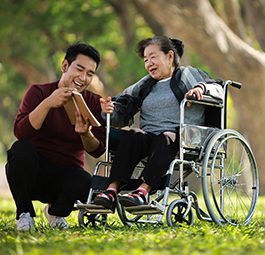Research and Reports
Clinical Research (Also Called Clinical Studies or Clinical Trials)
Clinical research is the study of health and illness in people. Clinical research tests new ways to prevent, detect or treat disease.
- New drugs or combinations of drugs
- New surgical procedures or tools
- New ways to use existing treatment
Clinical trials can also test other aspects of care. For example, they may research ways to improve quality of life for people with chronic illnesses. Clinical research is called many things. Some of the terms used to describe clinical research are:
- Clinical trials
- Clinical studies
- Medical trials
- Studies
- Research
- Trials
- Protocols
closed
What Is a Clinical Trial?
In a clinical trial, participants get specific treatments or interventions based on a research plan. This is also called research protocol. Interventions can be a medical product (e.g., drug or device), a procedure (e.g., surgery) or changes to the participants’ behavior (e.g., diet or exercise).
During the trial, researchers compare a new intervention with an existing one. Or they may compare a new medicine with a “placebo.” A placebo is a medicine that appears to be like the new medicine but has no active ingredients.
A comparative study is one type of clinical trial. It looks at the differences between interventions or medicines already available. For example, it might compare one type of asthma inhaler to another.
When researchers study a new product or approach, they usually don’t know if it will be helpful, harmful or make no difference compared to other interventions. They try to determine safety and effectiveness by measuring certain outcomes in participants.
What Are the Phases of Clinical Trials?
Purpose: Find out whether a medical approach (such as a drug, test or device) is safe, identify side effects and figure out the right doses.
Number of participants: usually fewer than 100
PHASE II
Purpose: Begin testing whether a medical approach works. Continue monitoring for side effects. Gather information for designing a large phase III trial.
Number of participants: around 100–300
PHASE III
Purpose: Prove whether a medical approach works and continue monitoring side effects.
Number of participants: as many as needed or can enroll, can be 1,000 or more
PHASE IV
Purpose: While a medical approach is being marketed, continue gathering information on its effects.
Number of people: thousands
Why Are Clinical Studies Done?
- Evaluation of one or more interventions for treating a disease, syndrome or condition
- Finding ways (medicines, vaccines or lifestyle changes) to prevent a disease or condition from developing or recurring
- Evaluating one or more methods aimed at finding or diagnosing a disease or condition
- Examining methods for identifying a condition or the risk factors for that condition
- Looking at and measuring ways to improve comfort and quality of life through supportive care
Who Conducts Clinical Trials?
Sponsors, groups or businesses usually pay for research. These might include:
- Pharmaceutical companies
- Academic medical centers
- Voluntary groups
- Nonprofit groups
- Federal agencies (like the NIH, PCORI, U.S. Department of Defense and U.S. Department of Veterans Affairs)
- Health care providers
- Other individuals
What Type of Plan Is Used to Make Sure Research Is Done Properly?
Protocols usually include the following information:
- Reason(s) for conducting the study
- Who may take part in the study
- The number of participants needed
- A schedule of tests, procedures or drugs and their dosages
- Length of the study
- What information will be gathered about the participants
Who Can Take Part in Clinical Studies?
Exclusion criteria are factors that disqualify someone from taking part in a study. Age, gender, the type and stage of a disease, prior treatment history and other existing medical conditions can be a part of inclusion and exclusion criteria.
How Are People Who Take Part in Clinical Research Protected From Harm?
Is Informed Consent a Contract?
What Is an Institutional Review Board?
Participating in Clinical Research
Participating in a clinical study contributes to medical knowledge. The results of these studies can make a difference in the care of future patients. They provide information about the benefits and risks of therapeutic, preventative or diagnostic products or interventions. Clinical trials provide the basis for developing and marketing of new drugs and medical devices.
The safety and effectiveness of the study may not be fully known at the time of the trial. Participants may have a chance to see direct medical benefits from some trials. But others may not. Trials may involve some risk of harm or injury to the participant. But it may not be greater than the risks related to routine medical care or disease progression. If the IRB approves a trial, it has decided that it has minimized and reasonable risks in relation to the benefits.
Trials may require participants to have extra procedures, tests and assessments based on the study protocol. The informed consent document lists these requirements. A potential participant should talk to members of the research team and with their health care provider about any issues.












